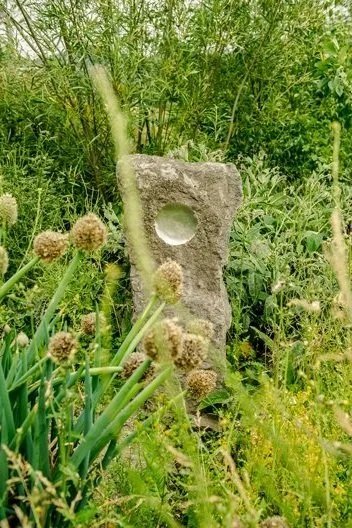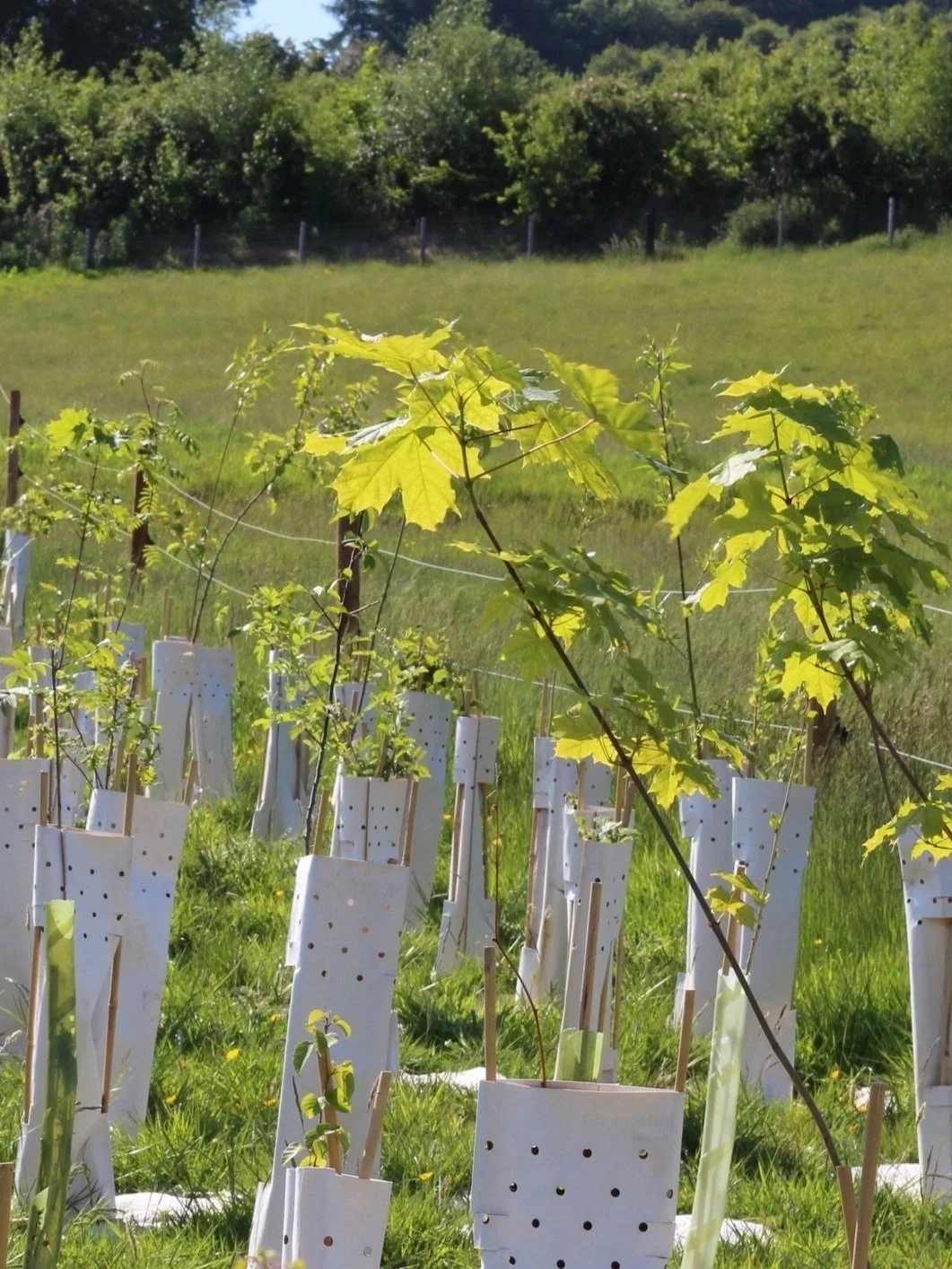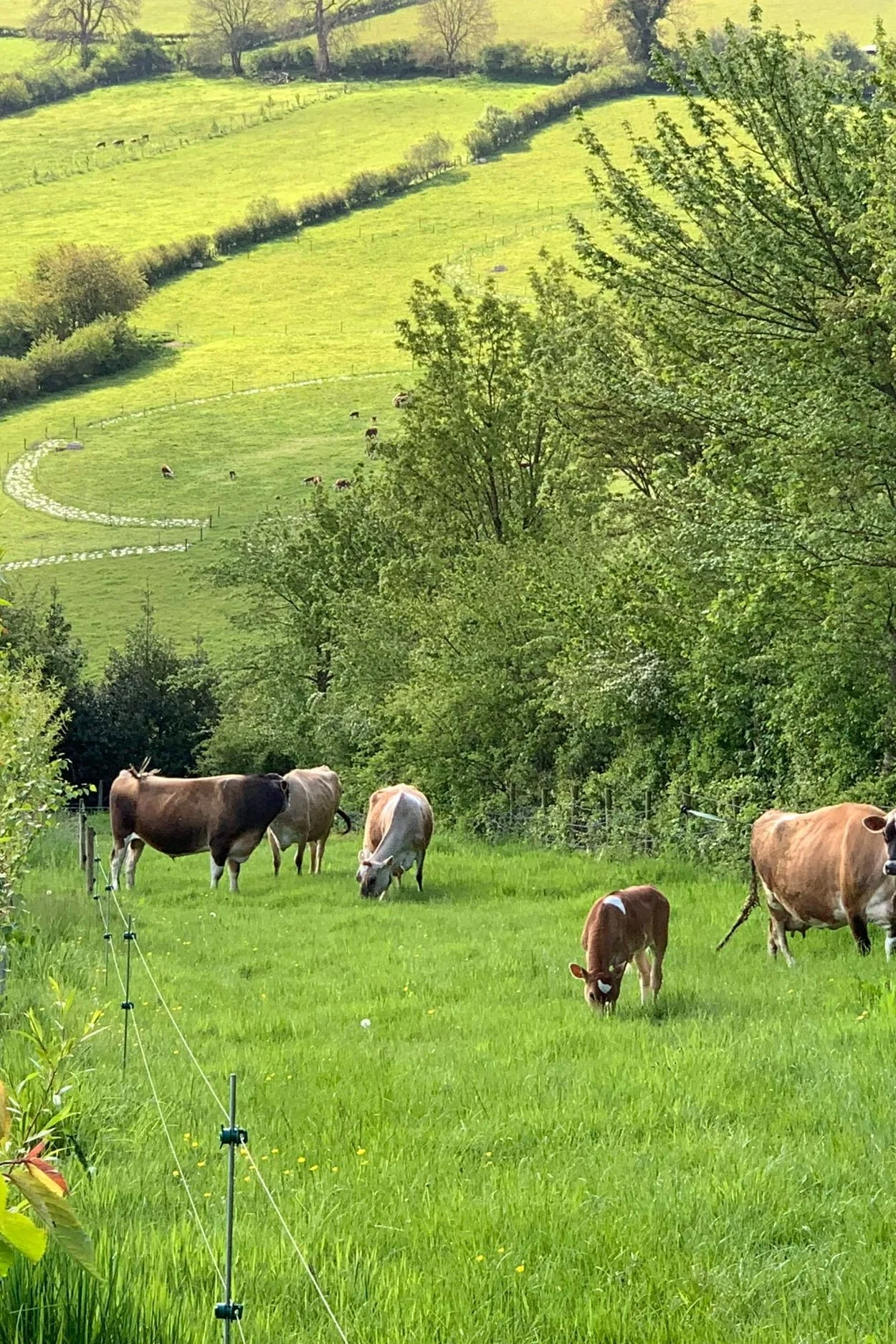
Wildlife & Conservation
We actively protect, conserve & enhance natural habitat & follow organic, wildlife-friendly farming practices.
Smiling Tree welcomes wildlife - birds, bats, bees, beetles and bugs galore!
We provide havens and hunting grounds in many forms: every area of the farm is wildlife-friendly and we have dedicated wildlife zones that we rarely interfere with, such as the shelter-belts, deep hedgerows and riparian areas. In other fantastic wildlife refuges, like the forest garden, we and nature work hand-in-hand.

Forest Gardens
Forest gardens are designed to mimic a natural woodland ecosystem where the trees and plants provide a sustainable, low-maintenance food source.
At Smiling Tree we have designed a forest garden of just over an acre where planting schemes are planned around guilds. A guild is a group of plants, such as trees, shrubs and herbs, that provide mutual benefits, including nitrogen fixation, mineral accummulation, attracting pollinators and providing shelter. The aim being to develop a healthy, self-sustaining system that provides benefits both for woodland wildlife, including food, shelter and habitat, and for people, including providing food and other useful produce such as medicinal plants, firewood and dyes.
A forest garden is really about wild food and wildlife. The best plants require little or no maintenance and are both hardy and productive. This means wild food can be harvested year-round, ranging from perennial vegetables, fruits and nuts to berries and herbs. Wildlife too thrives in the natural habitat of a forest ecosystem that provides pollinators as well as natural preditors to keep diseases and pests at bay. A forest garden is abuzz with life and positive energy.
There is an excellent explanation of forest gardening on the Earth Ways website.
Shelter Belts
A shelter belt is a strip of land where trees and shrubs are planted to give protection from strong winds to the adjoining fields.
The principle purpose of a shelter belt is just the beginning of the story, however, as there are so many more benefits these diverse and wild habitats provide.
As the trees and shrubs grow, grasses and brambles fill the spaces in between and soon a dense thicket is formed. This creates its own micro-climate and a diverse ecosystem evolves that is sustaining dozens of different species of wildlife.
The soil beneath becomes rich and deep and can hold many times more water than that in an open field. This helps prevent run-off, erosion and water pullution further down the catchment area.
The natural predatory insects help keep fly populations down, so that cattle and sheep in adjoining fields are less bothered by flies and the illnesses they can bring.
Over the years at Smiling Tree we have planted thousands of trees in many shelter belts and will continue to do so.

Riparian Zones
A riparian zone is the strips of land along the banks of a watercourse, from the largest rivers of the world to the smallest of streams. It is the interface between water and land, the green ribbon of life alongside the water's edge.
One of the fifteen designated terrestrial biomes of the earth, a riparian zone is an incredibly important and highly specialised ecosystem. A healthy riparian zone is made up of native vegetation comprising grasses, flowers, herbs, shrubs and trees. It acts as a source of energy and nutrients for stream communities. It provides shade and shelter, and keeps rivers and streams cool.
It also provides a unique habitat for wildlife and an important corridor for larger animals travelling through.
Not only are riparian zones essential habitats for the specialist flora and fauna that thrive there, but they also act as a buffer between land further up the catchment area and the watercourse itself.
Riparian zones slow floodwater and filter rainwater running off the land, preventing sediment, chemical fertilisers, pesticides and other pollutants reaching the water. So a healthy riparian buffer is essential for a healthy waterway.
At Smiling Tree we are fortunate to have a bubbling brook running through the middle of the farm with a thriving riparian zone on both banks. We have protected this area which, along with our shelter belts, provides a broad, deeply vegetative wildlife corridor through the middle of the farm.
Deep Tall Hedgerows
Hedgerows are a critical habitat for wildlife, performing many functions and providing many benefits.
Hedges were once used to keep animals in a field before steel wire fencing became the norm. In those days, hedges were laid, or 'pleached', to create a thick, inpenetrable, mesh of vegetation that provided both shelter and a boundary for sheep or cattle. The process of pleaching a hedge stimulated thick regrowth at the base as a result of which it grew wider, easily up to 6 or 8 feet deep.
Those deep hedgerows were a haven for wildlife, and not only for safe nesting. Each yard of hedge produced masses of fruits, nuts and berries for foraging by birds, small mammals and, of course, humans.
It was a tragedy that post-war drives for more food production saw Britain's hedgerows decimated, with over 100,000 miles of them ripped out since 1950. At Smiling Tree we are replanting and improving our hedgerows, aiming for those traditional deep, tall, productive wildlife havens of the past.







